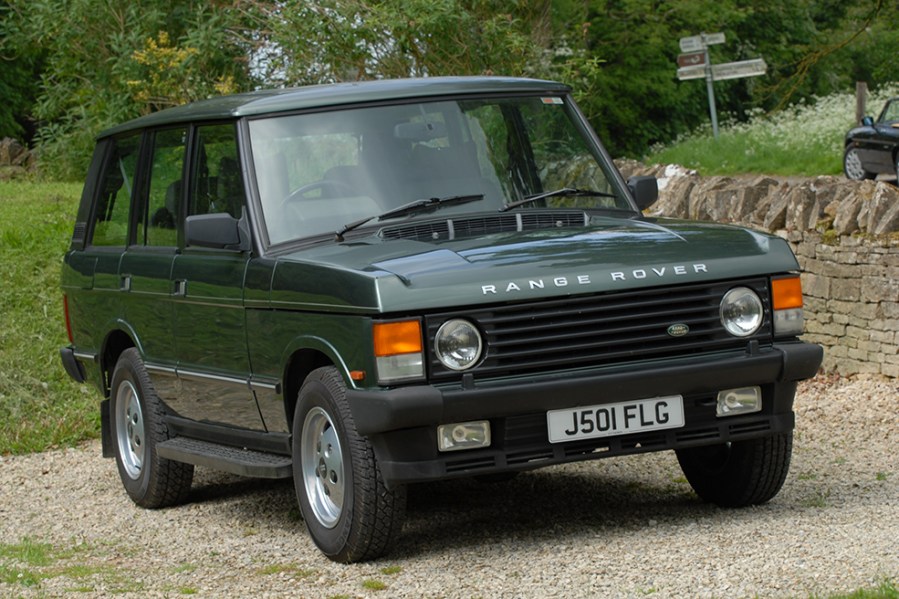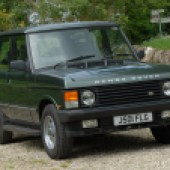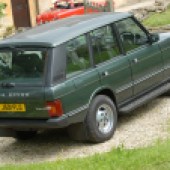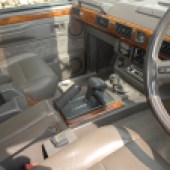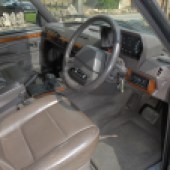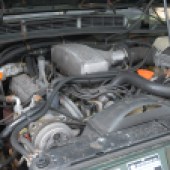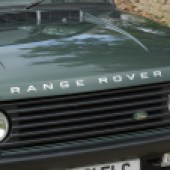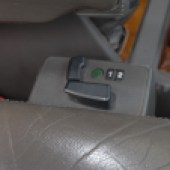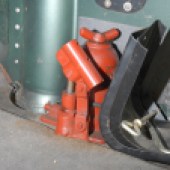The Range Rover Classic could well be the perfect multi-purpose classic: practical, spacious and easy to work on. Here’s everything you need to know
If you’ve kept even half an eye on early Range Rover Classic values of late, you’ll know that the three-door models in particular have shot up significantly, their value no doubt being enhanced by the sheer useability of the vehicles. The Range Rover may be a luxury icon today but when first introduced it was far more rugged and rough around the edges – although still a cut above its more agricultural siblings. Needless to say, a collectible classic isn’t quite how the Range Rover’s original designers saw it ending up. The original brief was aimed at creating a more user-friendly Land Rover rather than the prestige executive conveyance the Range Rover later became.
The Range Rover’s genesis was in the growing realisation at Solihull that the original Land Rover was severely limited as a road car, even in Tickford-developed station wagon form. A Rover P4-based prototype had even been worked up in 1951 under the Road Rover name which was more of a high-riding estate car than a serious off-roader but with Land Rover sales still buoyant, it was never pursued.
The idea was revisited in the early 1960s when Rover management was keen to enter the US market and after fact-finding junkets to America decided that the growth area was the leisure-orientated 4×4 vehicle, as illustrated by the Jeep Wagoneer and the Ford Bronco. The Road Rover concept was dusted off again, but to compete in this market would need all-wheel drive, while engineering chief Spen King also suggested coil spring suspension. At the time, leaf springs were accepted as the way to go off road, but during trials of a Bronco it had been discovered that the Ford’s front coils allowed greater wheel travel and thus superior traction.
Prototypes were built up using a simple but sturdy box-section chassis with a wheelbase of 99.9 inches which explains why the car was referred to internally as the ‘100-inch Station Wagon’. The coil springs gave the vehicle twice the axle articulation of the Land Rover and when it came to motive power, the ex-Buick V8 engine had come along at exactly the right moment. Some 90kg lighter than the old Rover straight-six engine, it also offered significantly more power and torque as well as the V8 marketing appeal which would be crucial to success in the US market.
Ironically, the Range Rover wouldn’t be sold there until 1987, something which Spen King would later out down to the expense of engineering the car to meet the country’s strict emissions and safety regulations.
With the V8 not yet in full production over here, these early prototypes used specially imported Buick engines, with the original Rochester carbs swapped for Zenith-Strombergs since the American carbs couldn’t cope with the steep angles the new vehicle was capable of.
The prototypes also used simple, utilitarian bodywork which was well liked by Rover management to the point that stylist David Bache was called upon merely to tidy it up, retaining the signature features of castellated bonnet and split tailgate.
Like the Land Rover, a steel central structure supported aluminium outer panels, although the bonnet and tailgate remained steel.
The design was signed off in 1968 and the Range Rover was launched in 1970 with just the one three-door body style and the 3.5-litre carb-fed V8 driving through a four-speed box. Incredibly, development of the automatic option and air conditioning were considered more important than the four-door body but neither would be produced first by land Rover itself: Schuler developed an automatic and a five-speed in 1979, while Swiss coachbuilder Monteverdi offered its own four-door from 1980, with input from Land Rover engineers.
The lack of investment in the product was addressed after newly installed BL chief Michael Edwardes in 1979 gave Land Rover more autonomy: in 1980 a facelift introduced the stick-on badging and revised rear lamps, while the factory four-door (based heavily on the Monteverdi conversion) and five-speed box arrived in 1981, with the automatic option following in 1982.
By this time, the Range Rover was already starting to move further upmarket and had gained plush carpeting and velour trim in place of the vinyl and rubber mats of the early cars. This was mirrored by the use of a specially prepared, more plushly trimmed Range Rover for a photo shoot in Vogue magazine, followed up by an ‘In Vogue’ special edition created by Wood & Pickett which then became a 1000-off production model before Vogue later became a regular trim level.
Refinement and trim were improved, with single-piece front windows from 1985 alongside an improved heater and electronic ignition, while fuel injection was added in 1986 and the automatic option became a four-speed ZF 4HP box. The same year saw the introduction of the first diesel Range Rover, powered by the 2.4-litre HR492 VM engine also used in the SD1.
The fuel filler was concealed under a flap in 1987, but bigger news was the switch to a chain-driven transfer box in 1988, which finally quietened the noisy transmission.
The original 3.5-litre V8 was enlarged to 3.9 litres in 1989, together with a revised dashboard at last moving the radio to the centre console and ABS appeared as an option on the Vogue SE – a first for an off-road 4×4 vehicle. This lasted until 1994 when the Range Rover received the modern soft-touch moulding developed for the Discovery II, these being known by RR buffs as the ‘soft dash’ models.
In 1990 the VM diesel was enlarged to 2.5 litres and in 1991 the CSK (after Charles Spencer ‘Spen’ King) limited edition of 200 cars was released, based on the two-door body with the 3.9 V8, ABS, sports suspension and special trim.
In 1992, a long-wheelbase version was added to the range, built on a 108-inch wheelbase and with the additional length added in the rear doors. Marketed as the LSE, this featured a new air suspension system dubbed ECAS in place of the coil springs. Based on HGV technology, it used airbags instead of springs, with an onboard compressor allowing the ride height to be varied according to speed, dropped for unloading and raised for rough cross-country driving. The LSE also received a further enlarged version of the V8, this time taken out to 4.2 litres and 200bhp.
The same year saw the VM diesel replaced by Land Rover’s own 200Tdi unit, offering 111 bhp and 195 lb.ft, itself replaced by the uprated 300Tdi in 1994, boasting the same power and torque but with improved driveabiity and economy. The LT77 manual box was replaced by the R380 five-speed.
The second-generation P38a was released in 1994 but the original Range Rover lived on until February 1996, gaining the tag Range Rover Classic. When it left production, a total of 317,615 had been made since 1970.

Bodywork
The Range Rover Classic’s construction means that most of what you see from the outside will be aluminium, which in turn means that even terminally rotten examples can still look deceptively presentable at first sight.
Those aluminium outer panels are bolted to a steel central structure though and this can rot alarmingly. The door shuts are easily visible and will give you a good first impression, while other areas to check include sills, inner arches and floor panels. Check the area around the rear seatbelt mountings carefully as this can be an MoT fail. Like the original Land Rover, the bulkhead needs careful inspection.
Oddly, Land Rover specialists tend to be agreed that the later ‘soft dash’ cars seem to rust more than the older cars. Sadly, they rust in all the same places as the earlier Range Rovers but also tend to let go in the bulkhead area and the corner of the scuttle. It’s not an easy repair and to fix it properly involves plenty of dismantling so it won’t be cheap. The steel upper tailgate window frame is notorious for corroding, as is the frame of the lower tailgate but these days aluminium replacements are available and make a permanent cure.
The chassis will also need checking for serious rust and bodged patch repairs, but luckily the Range Rover Classic’s ground clearance is ample to crawl underneath without needing a workshop lift. There’s no particular place which rusts more than any other, although it’s sensible to give the area over the rear axle a good prod. The best approach is simply to check the entire structure and at this point you’ll also notice if the vehicle has been used heavily off-road. Body-to-chassis mounting points also need careful checking.
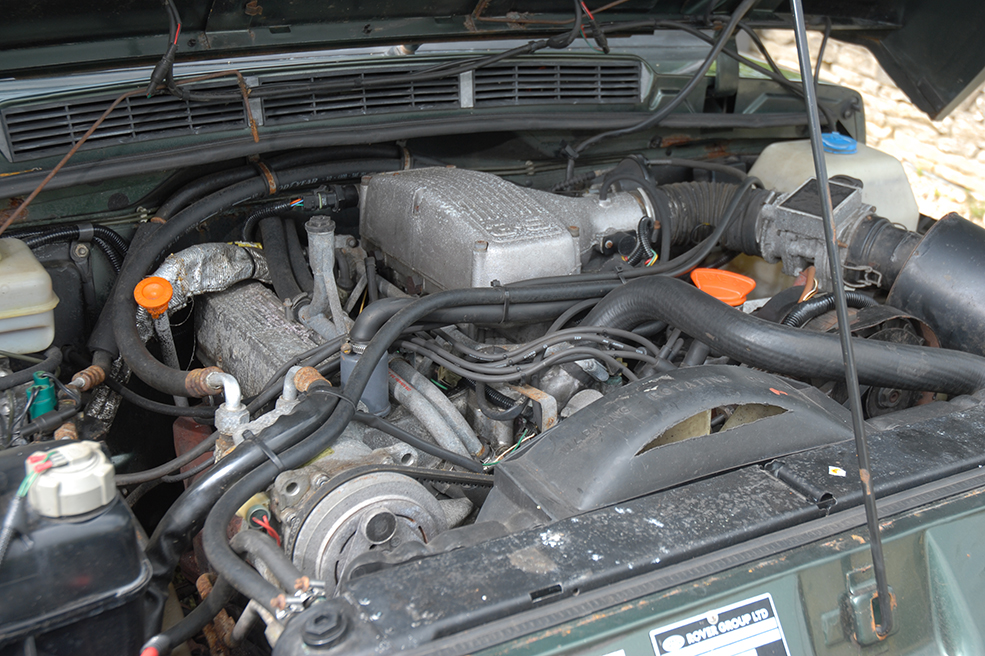
Engine and transmission
Of the two options, it’s the petrol engines which are considered the more reliable in old age and of those, it’s been said that the original 3.5-litre unit is the most robust. This was of course the capacity for which it was originally designed and with its short stroke and conservative output it’s relatively unstressed.
The 3.9 and 4.2-litre engines in the Range Rover Classic have been known to suffer from cracked bores and the solution is a ‘top hat’ liner which requires much work and machining but does retain the original engine number, unlike fitting a replacement engine.
The cooling system can also corrode and sludge up if the anti-freeze hasn’t been kept up to strength, so check for the usual signs of overheating under the bonnet.
The V8s do like regular oil changes and will quickly suffer if this is neglected. If you’re lucky a rattly engine can be quietened by fitting a new cam and followers. Similarly, a smoking engine may just need the breather system cleaning out but could equally be terminally worn. Poor running and fuel economy can be as simple as a worn distributor.
The diesels can suffer from tired injection pumps but more important is the timing belt: if it hasn’t been changed recently then get it done immediately on any new purchase. The VM engines use individual cylinder heads for each cylinder and these need to be torqued down properly.
In general the automatics are less troublesome and problems should be obvious: black-looking fluid, odd gearchange behaviour or slipping. The manual boxes in the Range Rover Classic can often get a hard life since buyers specified the self-shifter with towing in mind. If owners have been slamming the first-to-second change trying to maintain momentum with a heavy trailer on the hitch, then the synchro will feel weak and crunch easily. On both LT77 and R380 boxes, a clunk when coming on and off the power will indicate a worn mainshaft.
The LT77 box can run low on oil without owners realising it, so it’s worth getting the level checked before it seizes without warning.
Check the low range works, since replacing either gearbox or transfer box is a long and heavy job.

Suspension, steering and brakes
The Range Rover Classic was one of the first proper off-road 4x4s to offer disc brakes all round and the system is straightforward and DIY friendly. On an ABS-equipped model, if the ABS warning light comes on it can be caused by an incorrectly fitted sensor: the wheel speed sensors should have a fixed air gap between the sensor and the hub ring when they are correctly seated. Pushing them firmly into place often solves the issue – or suspect a worn wheel bearing pushing them out of alignment.
As far as the regular Range Rover Classic is concerned, it’s straightforward coil springs with the only complication being the Boge self-levelling strut fitted at the rear. If this starts to cause issues many owners simply fit uprated springs instead since the part has been unavailable for years. Remanufactured replacements are available but the cost can be eye-watering: we’ve seen them advertised for almost £2000.
As for the LSE, the air suspension will frighten off many potential owners but the system is far less troublesome than the later P38a set-up. The air suspension fitted to the Classic was derived from an HGV system and so was durable enough for the job in hand, while the compressor itself was sited under the vehicle away from the underbonnet heat which caused havoc with the later cars.
Steering boxes can leak past the seals, usually on full lock. It often looks much worse than it in fact is and you can carry on topping it up for a while, but will make a terrible mess on your driveway. A replacement steering box is the best solution.
A steering shimmy can be caused by a worn steering damper and uprated parts are available as replacements. Radius arm bushes can also cause a front-end shimmy but are easy enough to replace.
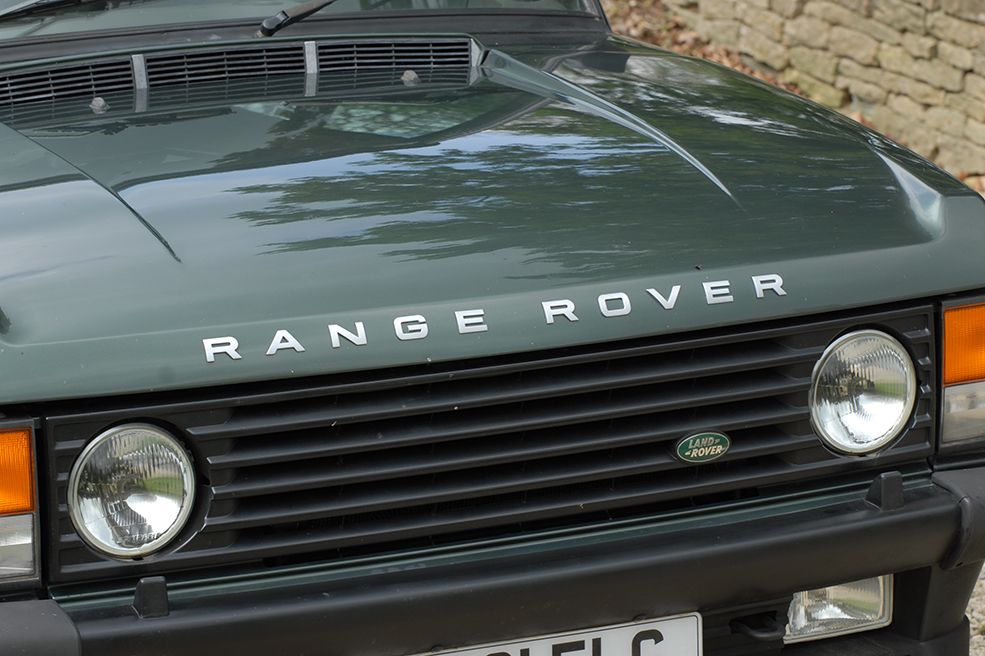
Interior
Range Rover Classic seats can be retrimmed in vinyl, velour or leather, door card inserts are available and a new carpet set is an easy way to cheer up a scruffy interior. Many detail parts are no longer available though, so if you view a car with parts missing do your homework to assess how easy they will be to replace.
It may not match the lofty standards set by the most modern Range Rover models but the Classic has its own charm inside, offering a combination of comfort and simplicity that will be familiar to anyone who’s spent time in a higher-spec Discovery. There’s a lot to be said for the commanding driving position out over that iconic squared-off clamshell bonnet, too: you’ll very quickly come to love the sense of security and surprising wieldiness given the car’s easy-to-judge extremities and large glasshouse.
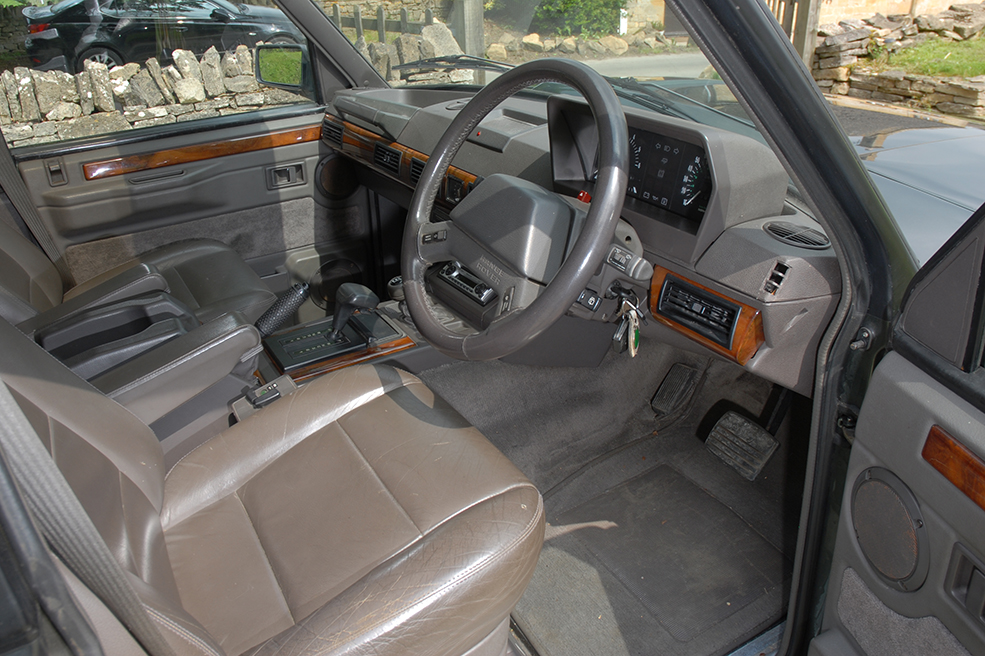
Range Rover Classic: our verdict
As a classic today, even the earliest Range Rover Classic makes a surprisingly practical proposition despite being nearly half-a-century old. The Range Rover’s simple construction and easy-to-digest engineering makes it very DIY friendly, but buying the wrong example can easily swallow up the cost of buying a good car in the first place. Buy well and you’ll have a truly useable family classic on your hands – and one that’s almost guaranteed to hold onto its value for the foreseeable future.

